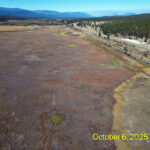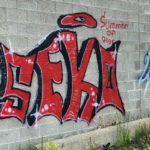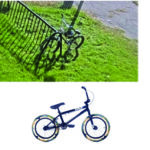Home »

Cranbrook Bird Count Dec. 28
This year, the Audubon Christmas Bird Count will mobilize over 72,000 volunteer bird counters in more than 2,500 locations across the Western Hemisphere.
This count event utilizes the power of volunteers to track the health of bird populations at a scale that scientists could never achieve alone. If you love birds, or are concerned about the local environment, consider making a contribution to counting efforts.
The first bird count in our area occurred in Fernie on Thursday, December 15. Several Rocky Mountain Naturalists from the Cranbrook area traveled to the Elk Valley to support fellow naturalists.
They began at the Morrissey Bridge, hoping to observe an American Dipper or Common Goldeneye feeding in the frigid Elk River. Following a walk along the Giant Cottonwoods Trail, they drove backroads on the east side of the valley hoping to observe woodland birds-creepers, nuthatches and chickadees – in the mixed forests.
One migratory bird, seen during previous counts, and recently, is the Rough-Legged Hawk (pictured above). These boldly pattered, dark brown hawks spend the summer capturing lemmings on the Arctic tundra, tending a cliffside nests under a sun that never sets. Winter is the time to see this large, open-country hawk in southern Canada and the USA, where it may be perched on a pole, or hovering over a marsh or pasture while hunting small rodents. In addition to perching on fence posts and utility poles, these hawks will be seen on the ground or in the slenderest treetops where other large raptors rarely chance sitting. Because of their bold underwing and tail patterns, as well as black belly patches, they can be identified from a vehicle even at highway speeds.
On their wintering grounds, they eat mostly voles, mice and shrews, hunting on the wing. They either pursue prey or hover into the wind and drop down. Sometimes they hunt from elevated perches, feed on carrion or steal from other hawks and ravens. Experiments suggest that, like the American Kestrel, Rough-legged hawks may be able to see vole urine which is visible in ultraviolet light.
Naturalists have been roving around the Cranbrook count area for the past few weeks.
We look for active feeders and open water while keeping our eyes and ears ‘peeled’ at all times. As usual, we hope that ‘feeder watchers’ will contact us in advance, as they can provide useful data while watching their own feeder from the comfort of their home.
As for the ‘field crew’ on Count Day, birding skills are useful but not mandatory. In Cranbrook on Wednesday, Dec. 28, we’ll meet at Elizabeth Lake Visitor Centre at 8:45 a.m. and divide ourselves into four or five groups. Each group needs a vehicle that can carry four people and keep it’s windows defrosted. One person records the birds while the others look and listen. We tend to drive a short distance, hop out and observe, and move along, considering that the area is quite large. At the end of the day, we meet for a meal and the ‘countup’.
To participate as a feeder watcher or field crew, please call Greg Ross 250-489-2566 or Daryl Calder 250-489-1601.
Recent Bird Sightings Near Cranbrook
Common Loon
Pied-billed Grebe
Western Grebe
Great Blue Heron
Snow Goose
Green-winged Teal
Mallard
Northern Shoveler
American Wigeon
Redhead
Ring-necked Duck
Common Goldeneye
Bufflehead
Common Merganser
Bald Eagle
Northern Harrier
Northern Goshawk
Red-tailed Hawk
Rough-legged Hawk
Golden Eagle
Merlin
Ruffed Grouse
Wild Turkey
American Coot
Killdeer
Rock Dove
Eurasian Collared-dove
Northern Pygmy Owl

Belted Kingfisher
Downy Woodpecker
Hairy Woodpecker
Northern Flicker
Pileated Woodpecker
Grey Jay
Steller’s Jay
Blue Jay
Clark’s Nutcracker
Black-billed Magpie
American Crow
Common Raven
Black-capped Chickadee
Mountain Chickadee
Red-breasted Nuthatch
White-breasted Nuthatch
Pygmy Nuthatch
Brown Creeper
American Dipper
Golden-crowned Kinglet
Townsend’s Solitaire
Bohemian Waxwing
Northern Shrike
European Starling
Song Sparrow
Dark-eye Junco
Red-winged Blackbird
Pine Grosbeak
House Finch
Red Crossbill
Common Redpoll
Pine Siskin
American Goldfinch
House Sparrow
Lead image: Rough-legged Hawk. Audubon photo
Rocky Mountain Naturalists









